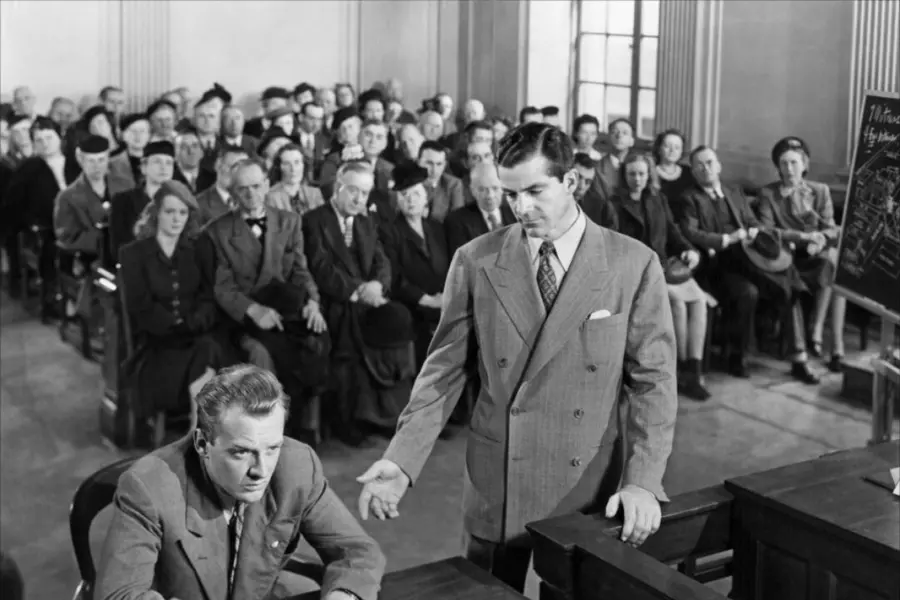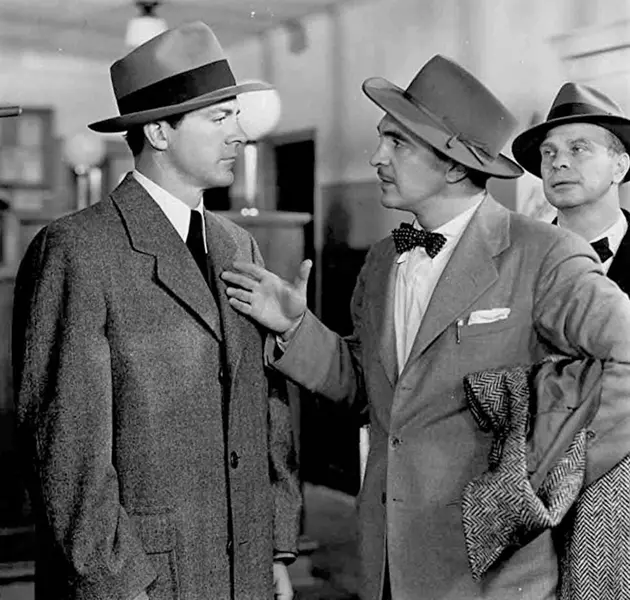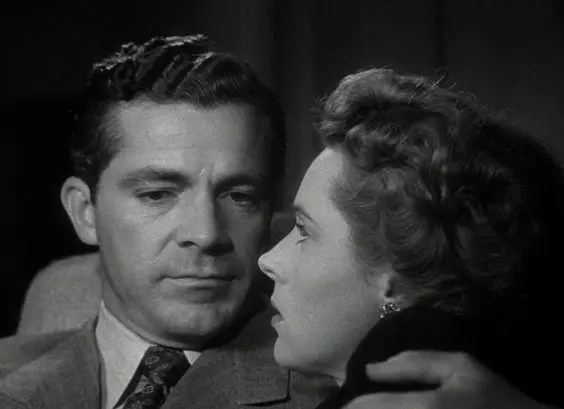The film delves into a dramatic retelling of the real-life 1920s murder case involving Father Hubert Dahme. The movie’s storyline revolves around the lone suspect, Harold Israel, who was prosecuted by Attorney Homer L. Cummings but ultimately acquitted. Despite its basis in factual events, the film contains no spoilers as the case remains unsolved to this day. Director Elia Kazan appears more interested in exploring human actions and motivations when it comes to administering justice, even if that means resorting to clear injustice.

The movie is set in Connecticut and begins with a man murdering a priest, Father Lambert, at point-blank range in public during the night. The killer escapes without a trace, leaving behind seven witnesses who claim to have seen “the whole thing.” They describe the assailant as wearing a “dark coat, light hat” and being of “medium build.” A narrator explains that Father Lambert was not only respected and loved by his community but also feared and hated for being a strict judge of character. This revelation makes it all too clear that someone did bear him a grudge.
As public outrage grows over the lack of progress in the investigation, city officials led by Chief Harold Robinson feel immense pressure to solve the case before they lose the upcoming election. Influential newspaper owner-publisher T. M. Wade uses this situation to his advantage, rallying the public against the police and city administration with his reporters and cartoonists.
State Attorney Henry Harvey is then pressured by McCreery & Co to find a suspect quickly, as they dangle the potential of a gubernatorial appointment in front of him if he delivers results. With such high stakes at play, both the justice system and public opinion are heavily influenced by the actions taken by those involved in the case.
Screenwriter Richard Murphy emphasizes the fallibility of human judgment when it comes to uncovering the truth. The legal process unfolds through various stages like Coroner’s Inquest, District Court, and Superior Court, each attempting to shed light on the real story while acknowledging the potential for corruption or misinformation from outside influences. The film highlights that guilt must be proven beyond a reasonable doubt before innocence can be disregarded, a principle well-represented by State Attorney Harvey when he reassures a witness under oath, “We’re all human.
Harvey experiences an eye-opening moment at home with his devoted wife Madge, where he comes to terms with the fact that one man’s life is more important than public opinion or political ambitions. This epiphany leads him to question the actions of those around him, who seem willing to condemn Harold Israel based on little evidence and significant pressure from the community.
As McCreery attempts to sway Harvey back into line by reminding him of the potential consequences of his stance, Harvey stands firm in his belief that one man’s life is worth fighting for. The film concludes with a powerful message that challenges the notion that it is acceptable to condemn even one innocent person for the sake of a nation or community. Kazan suggests that if a nation punishes an innocent individual, it has already lost its moral compass and can no longer claim to uphold justice or righteousness.



